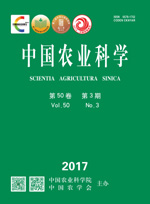-
The Composition and Content of Polyphenols in 16 Parts of ‘Zaosu’ and ‘Nanguoli’
- ZHANG XiaoShuang, ZHENG YingChun, CAO YuFen, TIAN LuMing, DONG XingGuang, ZHANG Ying, QI Dan, HUO HongLiang
-
Scientia Agricultura Sinica. 2017, 50(3):
545-555.
doi:10.3864/j.issn.0578-1752.2017.03.013
-
 Abstract
(
603 )
Abstract
(
603 )
 HTML
(
4 )
HTML
(
4 )
 PDF (986KB)
(
641
)
PDF (986KB)
(
641
)
 Save
Save
-
References |
Related Articles |
Metrics
【Objective】 In order to find out the best parts for polyphenol extraction and also provide the basic information for further utilization of pear germplasm, the composition and contents of polyphenols in 16 different tissues of two pear cultivars (crisp-fleshed cultivar, ‘Zaosu’, and soft-fleshed cultivar, ‘Nanguoli’) were analyzed. 【Method】 UPLC method was applied to determine the composition and contents of polyphenols in 16 parts of ‘Zaosu’ and ‘Nanguoli’, and 35 standard phenolic compounds were used for the detection. Namely, arbutin, gallic acid, 3,4-dihydroxybenzoic acid, neochlorogenic acid, procyanidins B1, DL-catechin, chlorogenic acid, cryptochlorogenic acid, 3,4-dihydroxycinnamic acid, procyanidins B2, syringic acid, epicatechin, pro-cyanidins C1, cyclohexanecarboxylic acid, P-hydroxycinnamic acid, quercetin-arab-glucoside, rans-4- hydroxy-3-met-hoxycinnamic acid, rutin, quercetin-3-galactoside, quercetin-3-glucoside, luteolin-7-O-glucoside, isochlorogenic acid B, kaempferol-3-O-rutinoside, avicularin, isochlorogenic acid A, isorhamnetin-3-rutinoside, isorhamnetin-3-O-galactoside, isorhamnetin-3-O-glucoside, phlorizin dihydrate, resveratrol, cinnamic acid, qutercetin dihydrate, phloretin, apigenin and kaemferol.【Result】Twenty-three polyphenols, including two simple polyphenols, one benylidene, five kinds of caffeoylquinic acid, five flavanols, nine flavonols and one dihydrochalcone were detected in ‘Zaosu’. Twenty-one polyphenols, including two simple polyphenols, one phenolic acid, two kinds of benylidene, four kinds of caffeoylquinic acid, four flavanols and nine flavonols were detected in ‘Nanguoli’. For ‘Zaosu’, young leaves had the highest contents of polyphenols (93.82 mg·g-1), while flesh had the least (0.63 mg·g-1). Arbutin and chlorogenic acid were observed in all tested tissues, and the former was analyzed to be the most important polyphenol in all detected tissues except the flesh, with the contents ranging from 0.08 mg·g-1 to 64.86 mg·g-1. Arbutin, syringic acid, chlorogenic acid, epicatechin, luteolin-7-O-glucoside and phlorizin dihydrate were the primary polyphenols in the six categories of detected polyphenols, with the contents of 403.5, 0.04, 79.83, 16.16, 9.07 and 0.13 mg·g-1, respectively. Different varieties of polyphenols were also detected in each tissue, 14 kinds of polyphenols were detected in mature leaf stalk and three kinds in xylem. For ‘Nanguoli’, young leaves had the highest contents of polyphenols (104.04 mg·g-1), while seeds had the least (2.66 mg·g-1). Arbutin and chlorogenic acid existed in all tested tissues, and the former was analyzed to be the most important polyphenol in all detected tissues except flesh and core, with the contents ranging from 0.87 mg·g-1 to 51.75 mg·g-1. Arbutin, 3, 4-dihydroxybenzoic acid, chlorogenic acid, epicatechin, luteolin-7-O-glucoside and phlorizin dehydrate were the primary polyphenols in the six categories of detected polyphenols, with the contents of 357.29, 0.01, 0.08, 122.15, 12.89 and 4.87 mg·g-1, respectively. Up to 13 different polyphenols were detected in mature leaf stalk and skin and at least three in the core. Among the 16 detected tissues, young leaves contained the highest contents of polyphenols in both ‘Zaosu’ and ‘Nanguoli’. Fruit skin showed higher contents and more diversity of polyphenols than fruit core, flower stalk had higher contents of polyphenols than flower and phloem showed higher contents and more diversity of polyphenols than xylem. 【Conclusion】 Arbutin and chlorogenic acid were detected in all parts of ‘Zaosu’ and ‘Nanguoli’, and arbutin was the polyphenol with the highest content. The kinds of polyphenols detected in this research were unanimous except phlorizin and protocatechuic acid. Young leaves were relatively abundant in the composition and contents of polyphenols and therefore could be used as extraction resources for further development and utilization.









